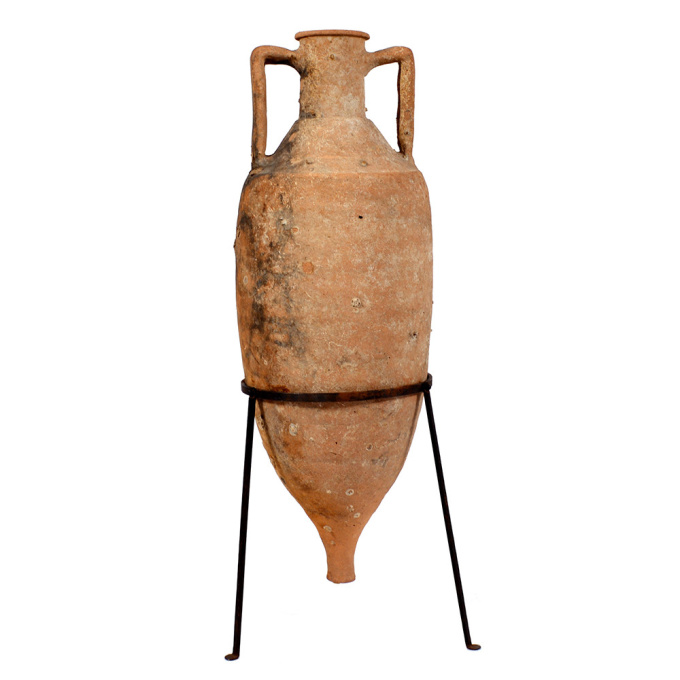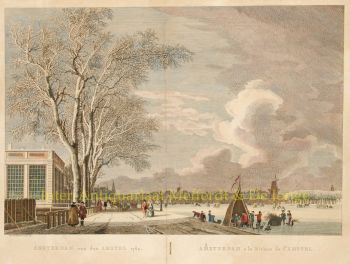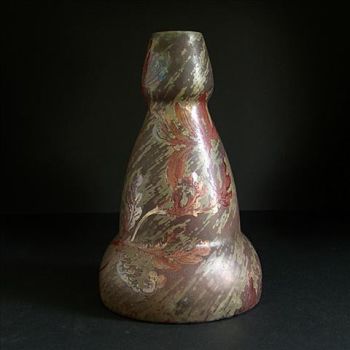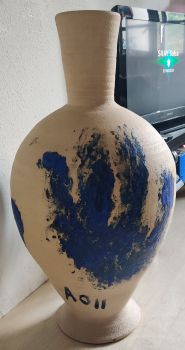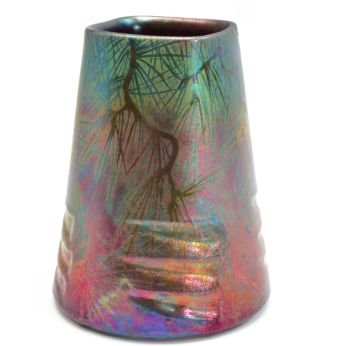Eine römische Schiffbruch-Terrakotta-Weintransport-Amphore 100 BC - 100 AD
Unbekannter Künstler
TerrakottaKeramik
91 cm
Derzeit nicht über Gallerease verfügbar
- Über Kunstwerk
This amphora type was based on prototypes from the Aegean island of Cos (Koan type). It has a simple ring-like rim with circular section, and a straight neck ending in a marked shoulder. With a cylindrical body and a solid cylindrical spike. The handles, which comprise two parallel clay shafts with a characteristic bifid section, are flexed and join the amphora immediately below the rim and on the shoulder close to its junction with the neck. With some marine encrustation to one side from long-term underwater exposure, while the other side was most likely submerged in sand and therefore protected. The amphora is fully intact and offered including stand. 91 cm (h) Type: Dressel 2-4 Italian; Koan amphora; Peacock & Williams 10 Ex German private family collection, owned since the 1950s The precise origin of domestic viticulture and winemaking in Rome has not been determined. Early Roman culture was sharply influenced by the ancient Greeks, which makes it likely that the Mycenaean Greeks had some influences in the Roman wine culture through early settlements in southern Italy. Because the ancient Greeks saw wine as a staple of domestic life and a viable economic trade commodity, their settlements were encouraged to plant vineyards for local use and trade. Southern Italy’s abundance of indigenous vines provided an ideal opportunity for wine production Wine had religious, medicinal and social roles that set it apart from other Roman cuisine. Wine, like in Greek culture was mixed with water, and both cultures held banquets, where wine was used to show off wealth and prestige. As Rome entered its golden age of winemaking and the era of expansion, a “democratic” approach to wine started to emerge. Wine was increasingly viewed as a necessity of everyday life rather than simply a luxury enjoyed by the elite. It became available to slaves, peasants and aristocrats, men and women alike. The widespread planting of grapes ensued from the need to serve all classes of society, but was also given impetus by the changing Roman diet. In the 2nd century BC, Romans began to shift from meals consisting of moist porridge and gruel to those more bread-based; wine aided in eating the drier food.
- Über Künstler
Es kann vorkommen, dass ein Künstler oder Hersteller unbekannt ist.
Bei einigen Werken ist nicht zu bestimmen, von wem sie hergestellt wurden, oder sie wurden von (einer Gruppe von) Handwerkern hergestellt. Beispiele sind Statuen aus der Antike, Möbel, Spiegel oder Signaturen, die nicht klar oder lesbar sind, aber auch einige Werke sind überhaupt nicht signiert.
Außerdem finden Sie folgende Beschreibung:
•"Zugeschrieben …." Ihrer Meinung nach wohl zumindest teilweise ein Werk des Künstlers
•„Atelier von ….“ oder „Werkstatt von“ Ihrer Meinung nach eine Arbeit, die im Atelier oder in der Werkstatt des Künstlers, möglicherweise unter seiner Aufsicht, ausgeführt wurde
•„Kreis von ….“ Ihrer Meinung nach ein Werk aus der Zeit des Künstlers, das seinen Einfluss zeigt, eng mit dem Künstler verbunden, aber nicht unbedingt sein Schüler
•"Art von …." oder „Anhänger von ….“ Ihrer Meinung nach eine Arbeit, die im Stil des Künstlers ausgeführt wurde, aber nicht unbedingt von einem Schüler; kann zeitgenössisch oder fast zeitgenössisch sein
•„Art von ….“ Ihrer Meinung nach ein Werk im Stil des Künstlers, aber späteren Datums
•"Nach …." Ihrer Meinung nach eine Kopie (jegliches Datums) eines Werks des Künstlers
• „Unterzeichnet …“, „Datiert …“. oder „Beschriftet“ Ihrer Meinung nach wurde das Werk vom Künstler signiert/datiert/beschriftet. Das Hinzufügen eines Fragezeichens weist auf einen Zweifel hin
• „Mit Unterschrift …“, „Mit Datum …“, „Mit Aufschrift ….“ oder „Trägt Unterschrift/Datum/Beschriftung“ ihrer Meinung nach die Unterschrift/Datum/Beschriftung von jemand anderem als dem Künstler hinzugefügt wurde
Artwork details
Related artworks
Unbekannter Künstler
EIN JAPANISCHES MODELL EINES NORIMONO, EINES PALANQUINS1650 - 1700
Preis auf AnfrageZebregs & Röell - Fine Art - Antiques
1 - 4 / 12Unbekannter Künstler
The bell of the VOC fortress in Jaffna, Sri Lanka1747
Preis auf AnfrageZebregs & Röell - Fine Art - Antiques
 Kuratiert von
Kuratiert vonDanny Bree
1 - 4 / 13Klaas II Mobach
Hanna Mobach, daughter of the sculptor Klaas Mobach, reading1950 - 1970
Preis auf AnfrageKunsthandel Pygmalion
1 - 4 / 24


